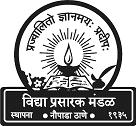|
||||||||||||||||||||
Published online 18 February 2009 | Nature | doi:10.1038/news.2009.107
India
protects traditional medicines from piracy
Access to national database eases search for existing
treatments.
K. S. Jayaraman
India woke up to biopiracy after a turmeric-based cure was patented in the
United States.Punchstock
European patent examiners can now access India's massive database on traditional
remedies in order to ensure that patents are not granted for treatments already
used in Indian systems of medicine. But critics say that the move, which is
intended to thwart piracy of traditional knowledge, may backfire.
The controversy centres on the Traditional Knowledge Digital Library, a searchable database of more than 230,000 formulations. Some 200 researchers took eight years to create the database after scouring ancient texts on Indian systems of medicine — Ayurveda, Unani, Siddha and Yoga — in Hindi, Sanskrit, Arabic, Persian and Urdu. The database is available in English, Japanese, French, German and Spanish.
Supporters say that the agreement, reached this month with the European Patent Office (EPO) in Munich, helps ensure that patents aren't granted for drugs based on traditional knowledge. "We are trying to establish the claim on traditional cures," says Vinod Kumar Gupta, the database's group leader at the Council of Scientific and Industrial Research (CSIR) in New Delhi.
India only woke up to biopiracy after an anti-fungal product derived from the native neem tree received a patent in Europe in 1994, and a turmeric-based cure was patented in the United States in 1995. India got both patents revoked after long battles.
The database, jointly owned by the CSIR and India's Ministry of Health and Family Welfare, was set up to dissuade foreign companies from patenting traditional medicines. But, with government approval, commercial agreements could be negotiated to make the library available to both foreign and Indian firms in 3–4 years time.
Patent potential
The agreement with the EPO marks a new stand on the issue of biopiracy and
is less aggressive than that taken by China, which is filing patents on traditional
medicines rather than simply trying to avoid unreasonable patenting by others.
But critics say that the deal will make it easier for others to profit from
traditional medicines. Drug multinationals can take leads from the database
or tinker with formulations to make them qualify for a patent, says Devinder
Sharma, a food- and trade-policy analyst based in New Delhi.
Gupta insists that EPO officers can access the database only to search and examine patents, and that they cannot disclose the information to a third party. But Palpu Pushpangadan, former director of the CSIR's National Botanic Research Institute in Lucknow, says that the information is not necessarily secure. "What is the guarantee that EPO officers will keep it secret?" he asks.
Shamnad Basheer, a patents expert at the National University of Juridical Sciences in Kolkata, says that the database should be made available to private parties — at a cost. "After all, there is no point in undertaking this massive exercise only to prevent patents," he says.
"Right now our aim is to ensure that patent offices reject applications on cures contained in the database," says Gupta. "We hope that if rejection takes place continuously for two years, companies will stop filing patents and instead take the legitimate route and approach us for access to database on commercial terms."
The Indian government is now in talks with the United States Patents and Trademark Office for an access agreement similar to the European one.




